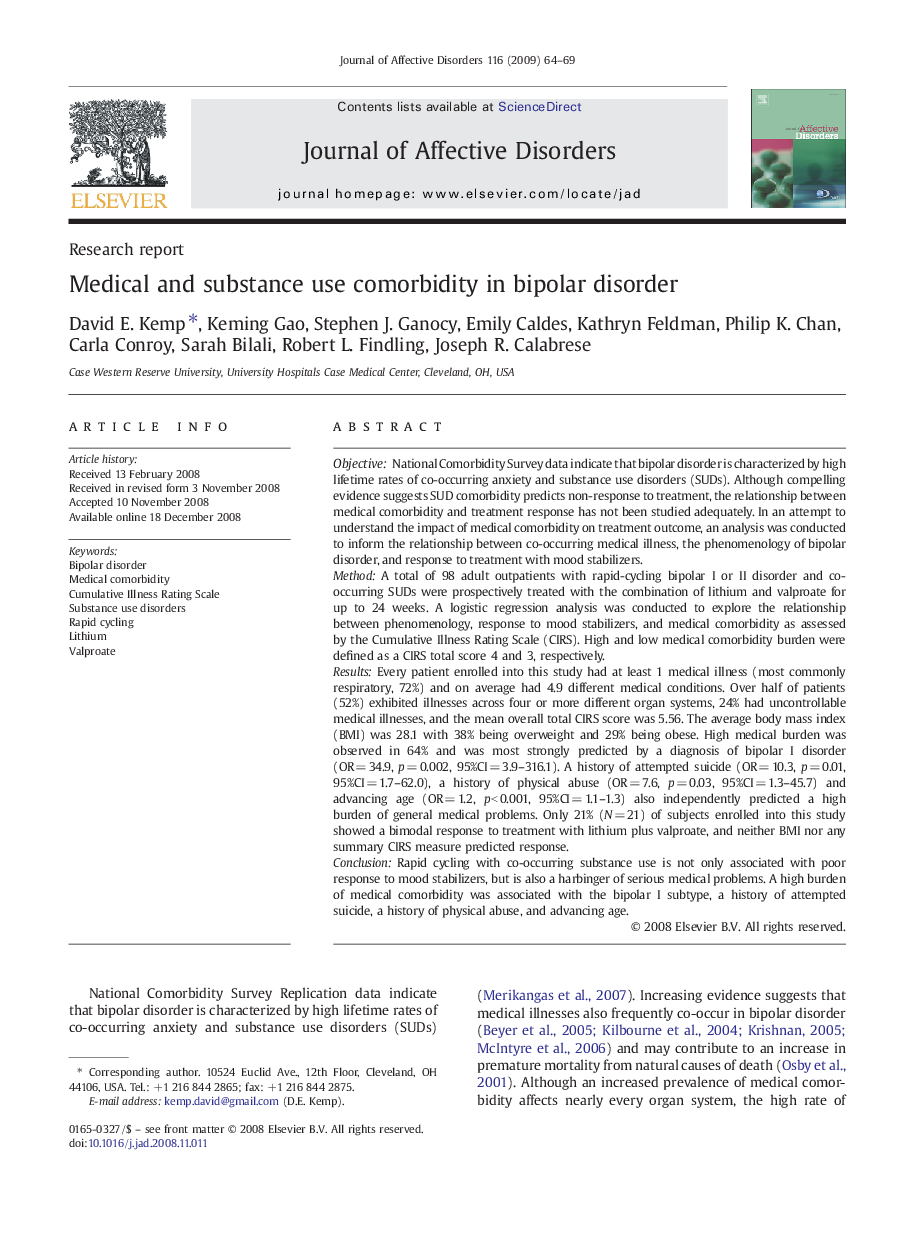| کد مقاله | کد نشریه | سال انتشار | مقاله انگلیسی | نسخه تمام متن |
|---|---|---|---|---|
| 4187054 | 1608204 | 2009 | 6 صفحه PDF | دانلود رایگان |

Objective:National Comorbidity Survey data indicate that bipolar disorder is characterized by high lifetime rates of co-occurring anxiety and substance use disorders (SUDs). Although compelling evidence suggests SUD comorbidity predicts non-response to treatment, the relationship between medical comorbidity and treatment response has not been studied adequately. In an attempt to understand the impact of medical comorbidity on treatment outcome, an analysis was conducted to inform the relationship between co-occurring medical illness, the phenomenology of bipolar disorder, and response to treatment with mood stabilizers.Method:A total of 98 adult outpatients with rapid-cycling bipolar I or II disorder and co-occurring SUDs were prospectively treated with the combination of lithium and valproate for up to 24 weeks. A logistic regression analysis was conducted to explore the relationship between phenomenology, response to mood stabilizers, and medical comorbidity as assessed by the Cumulative Illness Rating Scale (CIRS). High and low medical comorbidity burden were defined as a CIRS total score ≥ 4 and ≤ 3, respectively.Results:Every patient enrolled into this study had at least 1 medical illness (most commonly respiratory, 72%) and on average had 4.9 different medical conditions. Over half of patients (52%) exhibited illnesses across four or more different organ systems, 24% had uncontrollable medical illnesses, and the mean overall total CIRS score was 5.56. The average body mass index (BMI) was 28.1 with 38% being overweight and 29% being obese. High medical burden was observed in 64% and was most strongly predicted by a diagnosis of bipolar I disorder (OR = 34.9, p = 0.002, 95%CI = 3.9–316.1). A history of attempted suicide (OR = 10.3, p = 0.01, 95%CI = 1.7–62.0), a history of physical abuse (OR = 7.6, p = 0.03, 95%CI = 1.3–45.7) and advancing age (OR = 1.2, p < 0.001, 95%CI = 1.1–1.3) also independently predicted a high burden of general medical problems. Only 21% (N = 21) of subjects enrolled into this study showed a bimodal response to treatment with lithium plus valproate, and neither BMI nor any summary CIRS measure predicted response.Conclusion:Rapid cycling with co-occurring substance use is not only associated with poor response to mood stabilizers, but is also a harbinger of serious medical problems. A high burden of medical comorbidity was associated with the bipolar I subtype, a history of attempted suicide, a history of physical abuse, and advancing age.
Journal: Journal of Affective Disorders - Volume 116, Issues 1–2, July 2009, Pages 64–69